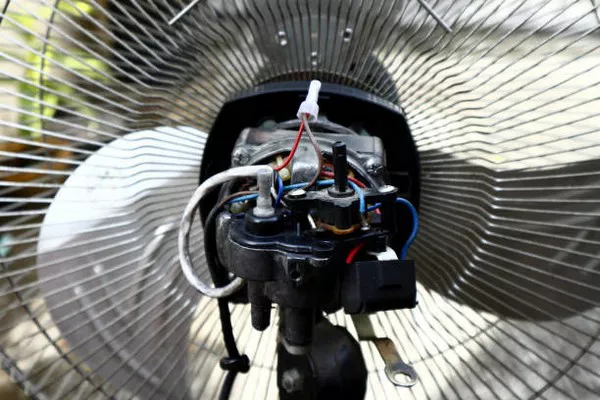Generators serve as essential power sources in various settings, from residential homes to industrial facilities. One of the key factors in maintaining the efficiency and longevity of a generator is ensuring it has the correct amount of oil. This article explores the oil requirements for generators, discussing the types of oil used, the importance of proper oil levels, and best practices for maintenance.
Types of Oil Used in Generators
Generators typically use two types of oil: mineral oil and synthetic oil. Each has its unique properties and advantages.
Mineral Oil
Mineral oil is derived from refining crude oil and is the most commonly used oil in generators. It is cost-effective and provides adequate lubrication under normal operating conditions. However, it tends to break down more quickly than synthetic oil, especially in extreme temperatures or heavy load conditions.
Synthetic Oil
Synthetic oil is engineered from chemical compounds, providing superior lubrication and performance. It offers better temperature resistance and stability, making it ideal for generators that operate in extreme conditions or for extended periods. Although more expensive than mineral oil, the longevity and efficiency of synthetic oil can justify the cost for many users.
Blends
Some generators may use blended oils that combine mineral and synthetic oils. These blends aim to deliver the benefits of both types, providing good lubrication while being cost-effective. Users should consult the generator’s manual to determine the most suitable oil type.
Oil Capacity in Generators
The oil capacity of a generator varies significantly depending on its size, type, and design. Here are some general guidelines:
Small Portable Generators
Small portable generators, commonly used for camping or backup power, typically have oil capacities ranging from 0.5 to 1.5 quarts (approximately 0.5 to 1.4 liters). These generators are generally designed for short-term use, and users should check the oil level before each use.
Mid-Sized Generators
Mid-sized generators, often used for home backup power or small construction sites, usually hold between 1.5 to 4 quarts (approximately 1.4 to 3.8 liters) of oil. It is essential to monitor oil levels regularly, especially during prolonged usage.
Large Generators
Large commercial and industrial generators can have oil capacities ranging from 5 to 10 quarts (approximately 4.7 to 9.5 liters) or more. These generators require more frequent oil checks, particularly under heavy load conditions. Users should refer to the manufacturer’s specifications for precise oil capacities.
Importance of Maintaining Proper Oil Levels
Maintaining the correct oil level in a generator is crucial for several reasons:
Lubrication
Oil serves as a lubricant for the moving parts of a generator, reducing friction and preventing wear. Inadequate oil levels can lead to increased friction, resulting in overheating and potential damage to engine components.
Cooling
Oil also plays a vital role in cooling the engine. It absorbs heat generated during operation and helps dissipate it. Low oil levels can cause the engine to overheat, leading to decreased performance and potential failure.
Contaminant Removal
Over time, oil can accumulate contaminants such as dirt, metal shavings, and combustion byproducts. Regular oil changes ensure that these contaminants are removed, maintaining engine efficiency and prolonging the generator’s lifespan.
Compliance with Manufacturer Specifications
Generators are designed with specific oil requirements to ensure optimal performance. Using the wrong type or insufficient oil can void warranties and result in costly repairs. Always refer to the owner’s manual for manufacturer recommendations.
How to Check Oil Levels
Regularly checking the oil level in a generator is a simple but crucial task. Here’s how to do it:
Turn Off the Generator: Always ensure the generator is turned off and cooled down before checking the oil level.
Locate the Dipstick: Most generators have a dipstick attached to the oil fill cap. Remove the dipstick and wipe it clean with a cloth.
Reinsert and Remove the Dipstick: Insert the dipstick back into the tube without screwing it in, then remove it again to check the oil level.
Check the Oil Level: The dipstick will have markings indicating the optimal oil level. If the oil is below the recommended level, add oil until it reaches the appropriate mark.
Inspect Oil Quality: Besides checking the level, inspect the oil’s color and consistency. Clean oil should be amber in color. If the oil appears dark or gritty, it may need to be changed.
Oil Change Frequency
The frequency of oil changes depends on several factors, including the type of oil used, the generator’s operating conditions, and manufacturer recommendations. Here are some general guidelines:
For Mineral Oil
- New Generators: Change the oil after the first 20 to 50 hours of operation to remove any contaminants from the break-in period.
- Routine Use: For regular use, change the oil every 50 to 100 hours of operation or at least once a season.
For Synthetic Oil
- New Generators: Similar to mineral oil, the first oil change should occur after 20 to 50 hours.
- Routine Use: Synthetic oil can often last longer; consider changing it every 100 to 200 hours of operation or according to manufacturer recommendations.
Severe Conditions
If the generator operates in extreme conditions—such as high temperatures, heavy loads, or dusty environments—oil changes should be more frequent. Regular inspections and adjustments based on usage patterns will help maintain optimal performance.
See Also How to Safely Run a Generator
Conclusion
Understanding how much oil a generator needs and the importance of proper maintenance can significantly enhance the performance and lifespan of the equipment. Regular checks of oil levels and timely oil changes are essential practices that ensure generators run smoothly, efficiently, and reliably. Whether using mineral, synthetic, or blended oil, always adhere to manufacturer guidelines for the best results. By taking these simple steps, users can avoid costly repairs and extend the operational life of their generators, ensuring they are ready to provide power whenever needed.
You Might Be Interested In

